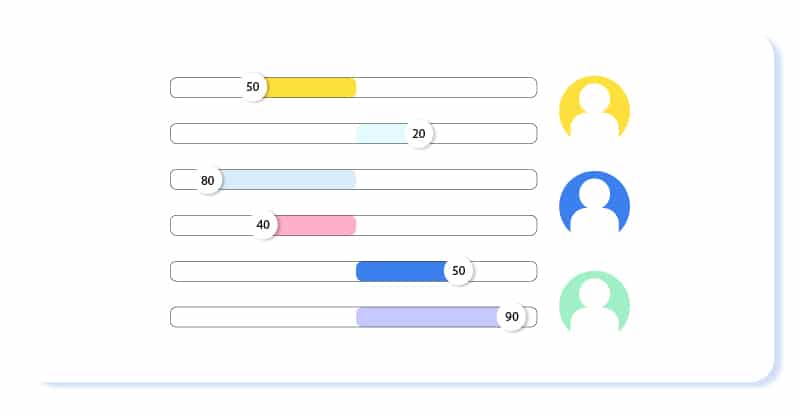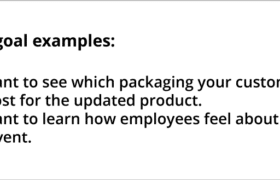
5 Unique Uses for CAPI Personal Interviewing Survey Software
Adding an interviewer to the mix for survey research is tremendously useful. We’ve discussed that before. But thinking outside the box, what can personal interviewing

Find the best survey software for you!
(Along with a checklist to compare platforms)
Take a peek at our powerful survey features to design surveys that scale discoveries.
Explore Voxco
Need to map Voxco’s features & offerings? We can help!
Find the best customer experience platform
Uncover customer pain points, analyze feedback and run successful CX programs with the best CX platform for your team.

We’ve been avid users of the Voxco platform now for over 20 years. It gives us the flexibility to routinely enhance our survey toolkit and provides our clients with a more robust dataset and story to tell their clients.
Steve Male
VP Innovation & Strategic Partnerships, The Logit Group
Explore Regional Offices

Find the best survey software for you!
(Along with a checklist to compare platforms)
Take a peek at our powerful survey features to design surveys that scale discoveries.
Explore Voxco
Need to map Voxco’s features & offerings? We can help!
Find the best customer experience platform
Uncover customer pain points, analyze feedback and run successful CX programs with the best CX platform for your team.

We’ve been avid users of the Voxco platform now for over 20 years. It gives us the flexibility to routinely enhance our survey toolkit and provides our clients with a more robust dataset and story to tell their clients.
Steve Male
VP Innovation & Strategic Partnerships, The Logit Group
Explore Regional Offices

Find the best survey software for you!
(Along with a checklist to compare platforms)
Take a peek at our powerful survey features to design surveys that scale discoveries.
Explore Voxco
Need to map Voxco’s features & offerings? We can help!
Find the best customer experience platform
Uncover customer pain points, analyze feedback and run successful CX programs with the best CX platform for your team.

We’ve been avid users of the Voxco platform now for over 20 years. It gives us the flexibility to routinely enhance our survey toolkit and provides our clients with a more robust dataset and story to tell their clients.
Steve Male
VP Innovation & Strategic Partnerships, The Logit Group
Explore Regional Offices








Customers’ decision to do business with you depends on the attitude they form towards your business. While it is easy to gather insight into their attitude, it is difficult to quantify them. However, you need to quantify customers’ attitudes to compare opinions and predict behavior.
The Thurstone scale is a way to quantify customers’ attitudes using an “agreement-disagreement” scale. The scale can help you uncover how a respondent feels and the strength of their feeling.

A Thurstone scale can be defined as a unidimensional scale that can be used to track respondent behavior, feelings, or attitude toward a particular subject. It does so using a format of ‘agree-disagree’ statements.
The scale presents statements about certain issues or subjects, and each statement is associated with a numerical value. This numerical value indicates whether the respondent’s attitude toward the subject is favorable or unfavorable. Once respondents indicate their feelings toward a statement, a mean score of agreements and disagreements is calculated. This score is meant to be reflective of a respondent’s attitude on the topic.
It is similar to the Likert scale, however, it takes into account the value of each category on the scale while evaluating the final attitude score, and also caters to neutral items.
Thurstone or Likert scale, select from 100+ question types to create engaging surveys that bring reliable and insightful data.
See all question types and robust functionalities.
02
Surveys that employ the use of this type of scale will often present a series of related, dichotomous statements on a particular subject. Here are a few examples.
03

These are most commonly used in the following ways:
Request a sample survey to see question types possible with Voxco.
04
The first step to creating your Thurstone scale is to identify and outline your research question. You must keep in mind that the statements have to indicate a person’s attitude on a particular subject.
For example, your research topic could be to find people’s opinions towards colleague seat reservations for the minor community.
The next step is to generate a series of agree-disagree statements that support the subject in varying degrees. It is helpful to include many statements as it will provide you with clearer and more useful data.
Your statements can be like the following examples.
3. Assign a score to each statement
Once you’ve generated your agree-disagree statements, it is now time to assign each statement a score between 1 to 11 based on how strong you believe the statement is.
A high score reflects a more supportive position and a low score reflects a more neutral position. Although you can choose to score the statements yourself, you can achieve a lower bias by employing the consensus of a study group.
For example, the scores assigned to the questions above are 3.5, 6, 9, 7, 6.5, 5.5, & 4 respectively.
The rank for each option must be unbiased and not based on your personal agreement or disagreement.
If you’ve employed the use of a study group, you should have each member score the statements based on how strong they believe them to be. You can then calculate the median score of each question and then order the statements in ascending order, from lowest median statements to highest median statements.
Voxco helped Frost & Sullivan conduct 100k surveys across 300 industries annually.
05
Each “agree” answer must be assigned a score between 1 to 11, as discussed above, and each “disagree” must be assigned a score of 0. The final score of each respondent’s quiz represents the strength of their opinion. The higher the score, the more supportive their opinion.
Once you gather all the responses, you can analyze and interpret the data in two ways.
You can simply count the number of questions a respondent has agreed to and calculate the percentage to conclude the respondent’s attitude. For example, if the respondent agreed with 2, 3, 5, & 7 statements from the above example out of 11, then the count is 4 out of 11. The 36.36% percentage indicates that the respondent’s attitude is not favorable to the statement.
Let’s say another respondent agreed with statements 2,3,5,6,& 7 out of 11. In this case, the attitude score is 6 + 9 + 6.5 + 5.5 + 4 = 31/ 5 = 6.2.
With this, the median score is 6.2, which indicates that this respondent favors the policy.
06
Several benefits contribute to the widespread use of this type of scale. We have listed a few below:
07
While there are advantages, it’s also natural for there to be cons. So here are some disadvantages you should be aware of.
Trusted by 500 global brands & top 50 MR firms, Voxco powers 100Mn+ surveys annually.
Gather, measure, uncover, and act with the leading insights platform.
08
The Likert scale can be said to complement the Turnstone scale. The Likert scale simplifies the complexity and provides more reliable data.
The Likert scale is simple to use, requires less time for the respondent to reply, and can be analyzed quickly. This scale uses numbered scale – odd or even- to collect responses. This allows for unbiased insight.
Thurstone scale is time-consuming, doesn’t have a neutral option, and data analysis can be complex. The statement on this scale is ranked by a judge which can often lead to biased judgment and gather unreliable data.
09
While it might be difficult to quantify and compare opinions and attitudes, the Thurstone scale can help you overcome this.
Read more

Adding an interviewer to the mix for survey research is tremendously useful. We’ve discussed that before. But thinking outside the box, what can personal interviewing

Voxco Named a Leader in the Survey Software category by G2 The review website also awarded Voxco badges for “Momentum Leader” and “High Performer Enterprise.”

Post Event Survey Questions SHARE THE ARTICLE ON Table of Contents WHAT IS POST EVENT SURVEY? Post-event surveys are one of the most accurate methods

Psychographic segmentation See what question types are possible with a sample survey! Try a Sample Survey 01 What is psychographic segmentation? Psychographic segmentation is the
Survey questions to ask SHARE THE ARTICLE ON Table of Contents If you are running a business, you will undoubtedly have questions. What improvements to

Advantages, Uses, and Types of Mixed Methods Research Supercharge your research with Voxco Book a demo SHARE THE ARTICLE ON Table of Contents For research,
We use cookies in our website to give you the best browsing experience and to tailor advertising. By continuing to use our website, you give us consent to the use of cookies. Read More
| Name | Domain | Purpose | Expiry | Type |
|---|---|---|---|---|
| hubspotutk | www.voxco.com | HubSpot functional cookie. | 1 year | HTTP |
| lhc_dir_locale | amplifyreach.com | --- | 52 years | --- |
| lhc_dirclass | amplifyreach.com | --- | 52 years | --- |
| Name | Domain | Purpose | Expiry | Type |
|---|---|---|---|---|
| _fbp | www.voxco.com | Facebook Pixel advertising first-party cookie | 3 months | HTTP |
| __hstc | www.voxco.com | Hubspot marketing platform cookie. | 1 year | HTTP |
| __hssrc | www.voxco.com | Hubspot marketing platform cookie. | 52 years | HTTP |
| __hssc | www.voxco.com | Hubspot marketing platform cookie. | Session | HTTP |
| Name | Domain | Purpose | Expiry | Type |
|---|---|---|---|---|
| _gid | www.voxco.com | Google Universal Analytics short-time unique user tracking identifier. | 1 days | HTTP |
| MUID | bing.com | Microsoft User Identifier tracking cookie used by Bing Ads. | 1 year | HTTP |
| MR | bat.bing.com | Microsoft User Identifier tracking cookie used by Bing Ads. | 7 days | HTTP |
| IDE | doubleclick.net | Google advertising cookie used for user tracking and ad targeting purposes. | 2 years | HTTP |
| _vwo_uuid_v2 | www.voxco.com | Generic Visual Website Optimizer (VWO) user tracking cookie. | 1 year | HTTP |
| _vis_opt_s | www.voxco.com | Generic Visual Website Optimizer (VWO) user tracking cookie that detects if the user is new or returning to a particular campaign. | 3 months | HTTP |
| _vis_opt_test_cookie | www.voxco.com | A session (temporary) cookie used by Generic Visual Website Optimizer (VWO) to detect if the cookies are enabled on the browser of the user or not. | 52 years | HTTP |
| _ga | www.voxco.com | Google Universal Analytics long-time unique user tracking identifier. | 2 years | HTTP |
| _uetsid | www.voxco.com | Microsoft Bing Ads Universal Event Tracking (UET) tracking cookie. | 1 days | HTTP |
| vuid | vimeo.com | Vimeo tracking cookie | 2 years | HTTP |
| Name | Domain | Purpose | Expiry | Type |
|---|---|---|---|---|
| __cf_bm | hubspot.com | Generic CloudFlare functional cookie. | Session | HTTP |
| Name | Domain | Purpose | Expiry | Type |
|---|---|---|---|---|
| _gcl_au | www.voxco.com | --- | 3 months | --- |
| _gat_gtag_UA_3262734_1 | www.voxco.com | --- | Session | --- |
| _clck | www.voxco.com | --- | 1 year | --- |
| _ga_HNFQQ528PZ | www.voxco.com | --- | 2 years | --- |
| _clsk | www.voxco.com | --- | 1 days | --- |
| visitor_id18452 | pardot.com | --- | 10 years | --- |
| visitor_id18452-hash | pardot.com | --- | 10 years | --- |
| lpv18452 | pi.pardot.com | --- | Session | --- |
| lhc_per | www.voxco.com | --- | 6 months | --- |
| _uetvid | www.voxco.com | --- | 1 year | --- |